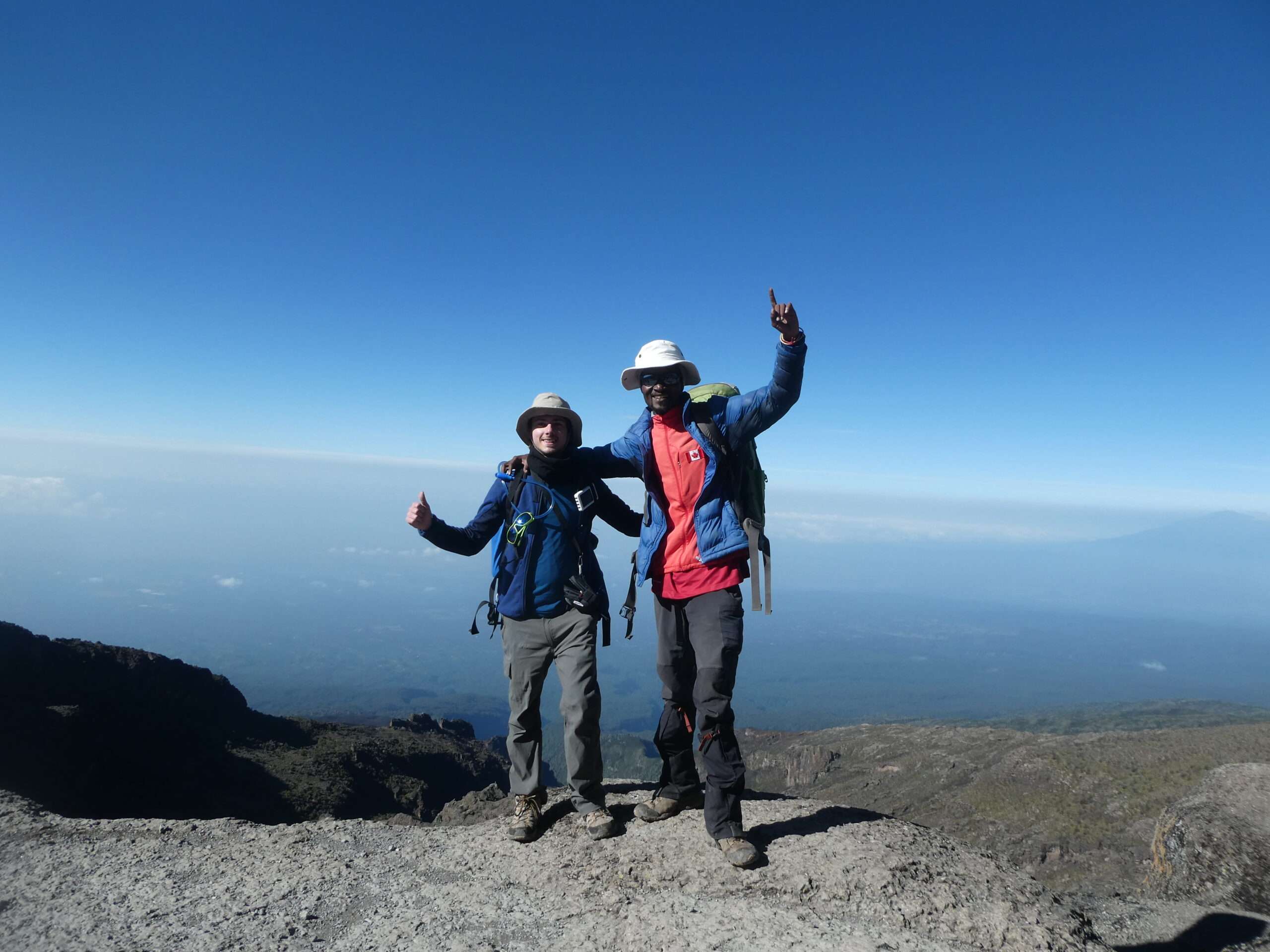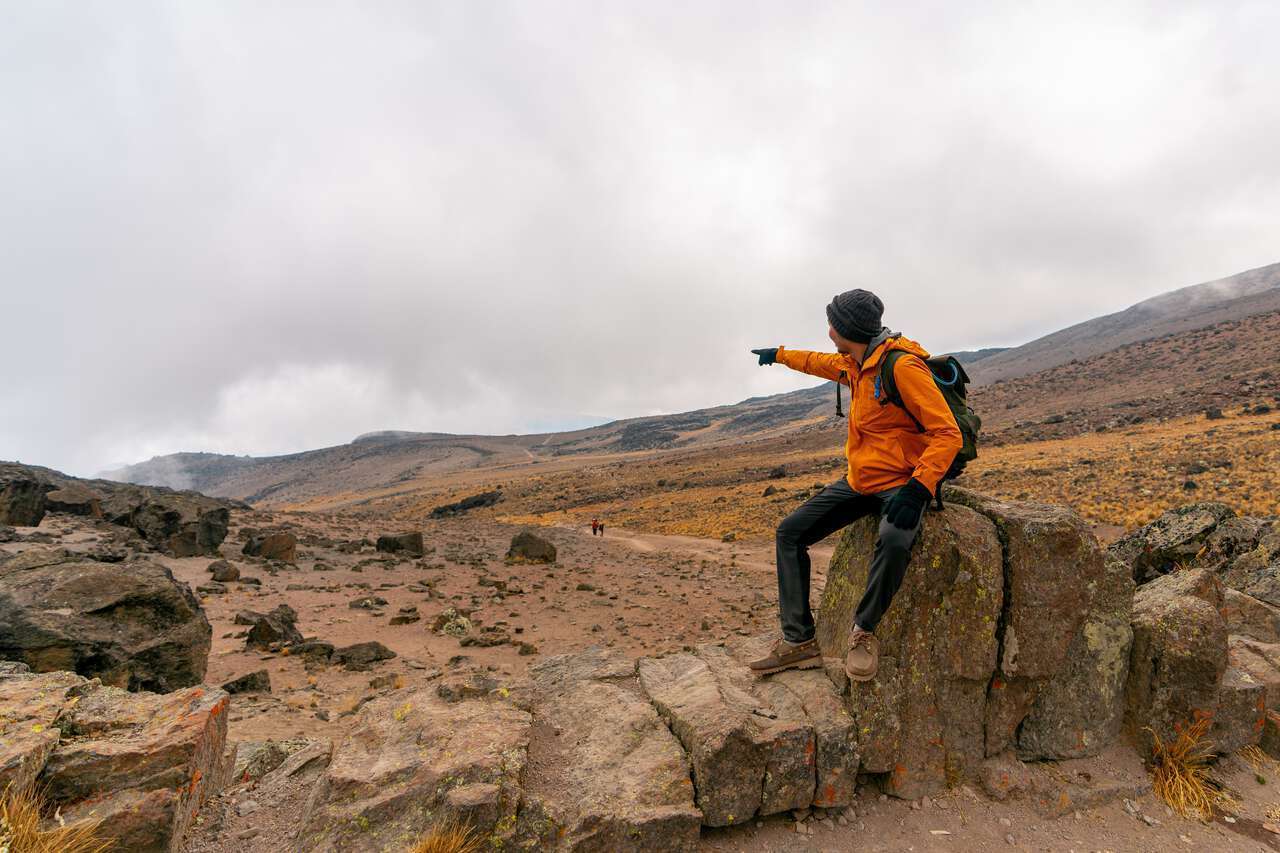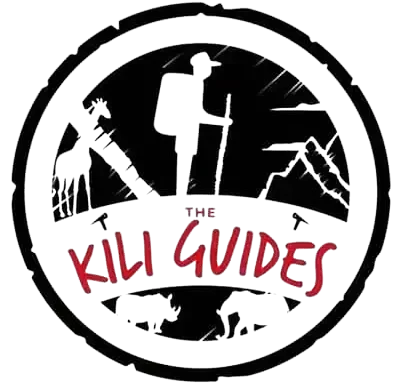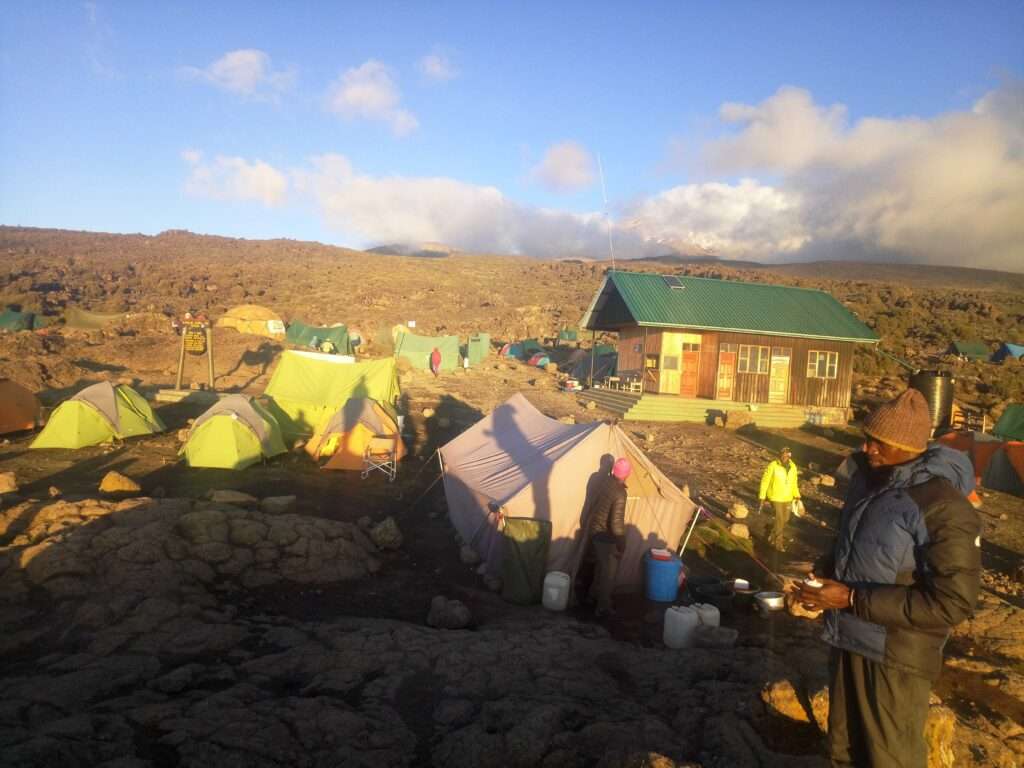The Ultimate Kilimanjaro Cost Guide: Everything You Need to Know for an All-Inclusive Kilimanjaro Climb
In this Kilimanjaro climbing guide you will learn about everything you need to know for an all-inclusive Kilimanjaro climb, Climbing Mount Kilimanjaro is a dream adventure for many outdoor enthusiasts. Standing at an impressive 5,895 meters (19,341 feet), the highest peak in Africa offers breathtaking views and a once-in-a-lifetime experience. However, planning a Kilimanjaro climb can be a daunting task, especially when it comes to budgeting and understanding the costs involved. From Kilimanjaro climbing fees to guide services and accommodation, there are several factors to consider. In this ultimate Kilimanjaro cost guide, we will provide you with everything you need to know to plan an all-inclusive Tanzania climb, including the different Kilimanjaro routes, the cost breakdown, and tips for a successful summit to Uhuru Peak. So let’s get started on your journey to conquer Mount Kilimanjaro!

Why climb Kilimanjaro?
Climbing Mount Kilimanjaro is not only a test of physical endurance but also an opportunity to push your limits and experience the grandeur of nature in its rawest form. The mountain offers a unique combination of challenges and rewards that draw adventurers from all over the world. Here are a few reasons why climbing Kilimanjaro should be on your bucket list.
Firstly, reaching the summit of Kilimanjaro is a true personal accomplishment. Standing at top of Uhuru Peak, you’ll feel a sense of triumph and pride that very few experiences can match. The feeling of conquering Africa’s highest peak is exhilarating and will stay with you forever.
Secondly, Kilimanjaro is a breathtakingly beautiful mountain. As you ascend, you’ll witness stunning landscapes, from lush rainforests to lunar-like alpine deserts. The diverse ecosystems and dramatic scenery make the climb an unforgettable visual experience.
Moreover, climbing Kilimanjaro offers a chance to immerse yourself in the local Tanzanian culture. Throughout the journey, you’ll interact with the friendly and welcoming guides and porters who will share their stories and traditions with you. This cultural exchange enriches the overall experience and provides a deeper understanding of the local community.
Lastly, climbing Kilimanjaro is a transformative journey. It pushes you beyond your comfort zone, forcing you to dig deep and discover inner strength and resilience. The mental and physical challenges you face on the mountain will leave you with a renewed sense of self-belief and a lasting impact on your life.
In the next section, we will delve into different Kilimanjaro routes, each offering a unique experience and level of difficulty. Stay tuned to choose the perfect route that suits your abilities and aspirations.

Factors that influence the cost of a Kilimanjaro climb
When planning a Kilimanjaro climb, it is essential to consider the factors that can impact the cost of your adventure. Understanding these factors will help you budget accordingly and make informed decisions. Here are the key factors that influence the cost of a Kilimanjaro climb:
Route Selection: The route you choose to climb Kilimanjaro can significantly affect the overall cost. Popular routes like the Marangu and Machame routes tend to be more affordable, while lesser-known routes like the Northern Circuit or the Lemosho route may come at a higher cost.
Duration of the Climb: The number of days you spend on the mountain will also impact the total cost. Longer climbs generally require more permits, additional camping fees, and increased staff support, making them more expensive.
Group Size: Whether you join a group climb or opt for a private climb will also affect the cost. Group climbs can be more cost-effective as the expenses are divided among the participants, whereas a private climb offers flexibility but comes at a higher price.
Inclusions and Amenities: The level of comfort and services provided during the climb can vary, influencing the cost. All-inclusive packages that include equipment, meals, accommodation, and experienced guides will naturally be more expensive, while basic packages may offer a more budget-friendly option.
Seasonality: The time of year you choose to climb Kilimanjaro can impact the cost. High season months, such as July and August, tend to be more expensive compared to low season months. However, it is important to note that high season months also offer better weather conditions for climbing.
Considering these factors will help you determine the overall cost of your Kilimanjaro climb. In the next section, we will explore the average cost breakdown for each component of the climb, providing you with a comprehensive cost guide. Stay tuned to accurately plan your Kilimanjaro adventure.


Choosing a reputable tour operator
Choosing a reputable tour operator is crucial when planning your Kilimanjaro climb. A trusted and experienced tour operator can make all the difference in ensuring a safe and successful expedition.
A reputable tour operator will have knowledgeable and certified guides who are trained in mountain safety and first aid. They will also have a proven track record of providing excellent service and taking care of their clients’ needs throughout the climb.
Researching and reading reviews about different tour operators is essential in selecting the right one for your expedition. Look for tour operators who are registered with the Tanzania National Parks and have positive reviews from past climbers.
Keep in mind that while price is an important factor, it should not be the sole basis for choosing a tour operator. Remember, you are entrusting your safety and well-being to them, so prioritize quality and reliability over cost.
In the next section, we will discuss the average cost breakdown for each component of the climb, giving you a comprehensive understanding of what to expect in terms of expenses. Stay tuned to plan your Kilimanjaro adventure budget effectively.


Understanding the different package options
When it comes to climbing Mount Kilimanjaro, there are various package options available to suit different budgets, preferences, and requirements. Understanding these options can help you make an informed decision and select the package that best aligns with your needs.
Budget Packages: If you’re on a tight budget, there are budget-friendly options available. These packages typically offer the basic necessities for the climb, such as accommodation, meals, and park fees. However, keep in mind that some amenities may be limited, and the level of service may not be as high as in more premium packages.
Mid-Range Packages: Mid-range packages offer a balance between affordability and comfort. These packages usually include better accommodation options, additional services such as airport transfers, and a higher level of support and guidance from experienced guides.
Luxury Packages: For those seeking a more luxurious experience, there are high-end packages available. These packages offer superior accommodation, gourmet meals, and additional amenities such as hot showers and portable toilets. They also provide a higher level of personalized service and attention to detail.
Private Expeditions: If you prefer a more exclusive and personalized experience, you can opt for a private expedition. These packages cater to smaller groups or individuals and offer flexibility in terms of itinerary, pace, and accommodation choices.
It’s important to carefully consider your preferences, budget, and the level of comfort you desire when selecting a package. Additionally, consult with your chosen tour operator to ensure that the package you choose includes all the necessary services and logistics for a safe and enjoyable climb.
By understanding the different package options, you can make an informed decision and ensure that your Kilimanjaro climb is tailored to meet your specific needs and expectations. In the next section, we will delve into the average cost breakdown for each component of the climb, helping you plan your budget effectively. Stay tuned for valuable insights that will help you prepare for your ultimate Kilimanjaro adventure.
Additional costs to consider
When calculating the costs of climbing Mount Kilimanjaro, it is essential to factor in additional expenses that may arise during the climb. Although many tour packages include the basic necessities, there are still some costs that you need to consider in order to have a comprehensive understanding of your budget.
Gear and Equipment: Depending on the tour operator and the package you choose, some gear and equipment may be provided, while others may require you to bring your own. Consider the costs of purchasing or renting items such as hiking boots, sleeping bags, backpacks, and outerwear.
Travel Insurance: It is highly recommended to have travel insurance that covers medical expenses, trip cancellation, and emergency evacuation. While this is not included in most tour packages, it is an essential investment for your safety and peace of mind.
Visa Fees: Visitors to Tanzania are required to obtain a visa, and the cost varies depending on your nationality. Make sure to research the current visa fees and budget accordingly.
Tips for Guides and Porters: Tipping is customary on Kilimanjaro climbs, as the guides and porters play a crucial role in ensuring your safety and comfort. It is respectful to tip them for their hard work and dedication, and the amount may vary depending on the size of your group and the duration of your climb.
By considering these additional costs, you can better plan and budget for your Kilimanjaro climb. In the next section, we will discuss the average cost breakdown for each component of the climb, providing you with valuable insights to help you plan your budget effectively. Stay tuned for important information that will help you make the most of your ultimate Kilimanjaro adventure.

Tips for budgeting and saving money
Planning a climb up Mount Kilimanjaro can be an exciting and fulfilling adventure, but it can also require a significant financial commitment. In this section, we will provide you with some tips on how to budget and save money for your Kilimanjaro climb, without compromising on safety or quality.
Start Saving Early: As soon as you decide to undertake this epic journey, start setting aside a portion of your income specifically for your Kilimanjaro climb. This will enable you to accumulate the necessary funds without feeling overwhelmed by the financial burden.
Research and Compare Prices: Explore different tour operators, and carefully compare the costs and inclusions of their packages. Don’t forget to read reviews and reach out to previous climbers for their insights and recommendations. By doing thorough research, you can find the best value for your money.
Plan Your Climb during Off-Peak Season: Climbing during the off-peak season, typically between March and May and October and December, can often yield lower prices as tour operators offer discounts to attract more climbers. Additionally, the trails are less crowded during these periods, allowing for a more serene experience.
Travel in a Small Group: Consider joining a group climb or organizing a private climb with a few close friends or family members. Sharing the expenses of guides and porters can significantly reduce the overall cost per person.
Be Discerning with Extras: While it can be tempting to add on extra services or amenities, such as luxury accommodations or additional activities, these can quickly raise the cost of your climb. Evaluate whether these extras are essential to your experience or if you can do without them to save money.
Embark on a Shorter-duration Climb: Opting for a shorter-duration climb, such as a 6-day trek rather than an 8- or 9-day expedition, can lessen the overall cost of the climb. However, ensure that you are physically prepared for the challenges of a shorter itinerary.
By implementing these tips, you can effectively budget and save money for your Kilimanjaro climb, making your adventure more attainable and enjoyable. In the next section, we will break down the average costs for each component of the climb, providing you with a comprehensive understanding of the expenses involved. Stay tuned for the valuable insights that will help you plan your budget smartly and achieve your Kilimanjaro goals.


The importance of safety and quality
When planning your Kilimanjaro climb, it’s important to prioritize safety and quality above all else. While it may be tempting to choose the cheapest tour operator or cut corners to save money, it’s crucial to remember that your safety and overall experience on the mountain should always come first.
One of the most significant factors to consider is the level of expertise and experience of the tour operator. Look for companies that have a proven track record of safety and success in guiding climbers up Kilimanjaro. Read reviews, ask for recommendations, and don’t hesitate to reach out to previous climbers for their insights.
Additionally, ensure that the tour operator follows proper safety protocols and provides adequate support throughout the climb. This includes having well-trained guides and porters, supplying reliable equipment, and offering emergency evacuation plans.
While it’s understandable to want to cut costs, compromising on safety can have disastrous consequences. Remember that this is a challenging expedition, and you’ll want to have peace of mind knowing that you’re in good hands.
In the following section, we will delve into the various components of the climb, providing insights into how to choose the right tour operator and ensure a safe and high-quality experience. Stay tuned as we guide you through this essential aspect of your Kilimanjaro journey.


Don't forget about the tipping culture in Tanzania
When planning your Kilimanjaro climb, it’s essential to understand and respect the tipping culture in Tanzania. While tipping is not mandatory, it is customary and greatly appreciated by the local guides and porters who work hard to make your climb a success.
Tipping is an important part of the local economy and a way to show gratitude for the services provided. It is recommended to budget around 10-15% of the total cost of your climb for tipping. This amount can be divided among the climbing staff, including guides, cooks, and porters, based on their level of involvement and contribution.
Keep in mind that the tips you provide can make a significant impact on the livelihood of these individuals and their families. It’s a gesture of appreciation for their hard work and dedication.
Before embarking on your Kilimanjaro climb, inquire with your tour operator about the tipping guidelines they recommend. They will be able to provide you with specific information on the appropriate amounts and how to distribute them among the climbing staff.
Remember, a little goes a long way, and your generosity will be greatly appreciated by the local guides and porters who work tirelessly to ensure your safety and comfort throughout the expedition.


Conclusion: Investing in a memorable Kilimanjaro experience
When it comes to climbing Mount Kilimanjaro, it’s important to remember that it’s not just the cost of the climb that matters. It’s also about the experiences, memories, and relationships you build along the way. Tipping is just one way to contribute to the local economy and show appreciation for the hard work and dedication of the climbing staff.

By budgeting for tipping and following the recommended guidelines, you can invest in a memorable Kilimanjaro experience for both yourself and the people who make it possible. Your generosity will not only make a significant impact on their livelihoods but also create a positive ripple effect within the community.
So, as you plan your all-inclusive Tanzania climb, don’t forget to consider the tipping culture and include it in your budget. Your investment in gratitude will surely be rewarded with a once-in-a-lifetime adventure on one of the world’s most majestic mountains.




